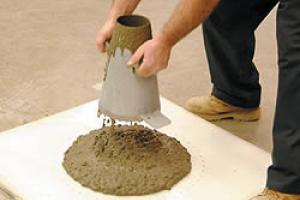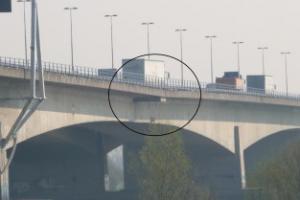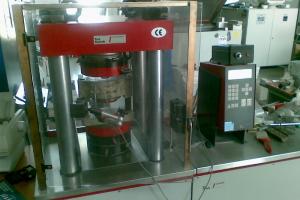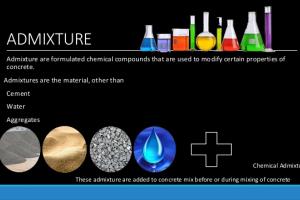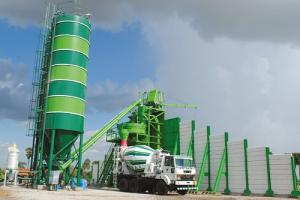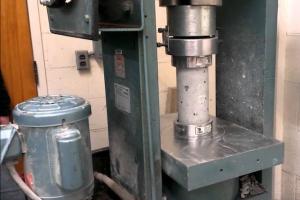Batching, Mixing, Placing and Compaction of Concrete
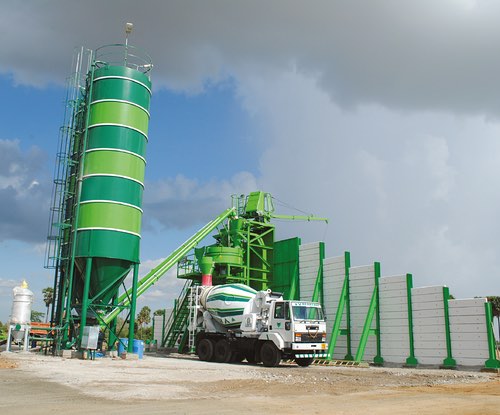
Batching
Batching is the process of measuring concrete mix ingredients either by volume or by mass and introducing them into the mixture. Traditionally batching is done by volume but most specifications require that batching be done by mass rather than volume. Percentage of accuracy for measurement of concrete materials as follows.
Cement:
When the quantity of cement to be batched exceeds 30% of scale capacity, the measuring accuracy should be within 1% of required mass. If measuring quantity is less than 30% i.e. for smaller batches then the measuring accuracy should be within 4% of the required quantity.
Aggregates:
If the measurement is more than 30% of the scale capacity then the measuring accuracy should be within 1%. If measurement is less than 30% then the measuring accuracy should be within less than 3%.
Water:
Water is measured in volumetric quantity as 1 litre = 1kg. In case of water, the measuring accuracy should be within 1%.
Admixtures:
For mineral admixtures same accuracy as that required for cement.For chemical admixtures same accuracy as that required for water. Mineral admixtures accuracy is same as that of cement because it is used as partial replacement of cement. As chemical admixtures are liquid or added to water therefore its accuracy is same as that of water.
Mixing
The mixing operation consists of rotation or stirring, the objective being to coat the surface the all aggregate particles with cement paste, and to blind all the ingredients of the concrete into a uniform mass; this uniformity must not be disturbed by the process of discharging from the mixer.
Batch mixer
The usual type of mixer is a batch mixer, which means that one batch of concrete is mixed and discharged before any more materials are put into the mixer. There are four types of batch mixer.
Tilting drum mixer:
A tilting drum mixer is one whose drum in which mixing take place is tilted for discharging. The drum is conical or bowl shaped with internal vanes, and the discharge is rapid and unsegregated so that these mixers are suitable for mixes of low workability and for those containing large size aggregate.
Non tilting drum mixer:
A non tilting drum is one in which the axis of the mixer is always horizontal, and discharge take place by inserting a chute into the drum or by reversing the direction or rotation of drum. Because of slow rate of discharge, some segregation may occur.
Pan type mixer:
A pan type mixer is a forced–action mixer, as distinct from drum mixer which relies on the free fall of the concrete inside the drum. The pan mixer consist of a circular pan rotating about its axis with one or two stars paddles rotating about vertical axis of pan.
Dual drum mixer:
A dual drum is sometimes used in highway construction. Here there are two drums in series, concrete being mixed part of the time in one and then transferred to the other for the remainder of the mixing time before discharging.
Continuous mixers:
These are fed automatically by a continuous weigh-batching system.
Charging the mixer:
There are no general rules on the order of feeding the ingredients into the mixer as this depend on the properties of the mixer and mix. Usually a small quantity of water is fed first, followed by all the solids materials. If possible greater part of the water should also be fed during the same time, the remainder being added after the solids. However, when using very dry mixes in drum mixers it is necessary to feed the coarse aggregate just after the small initial water feed in order to ensure that the aggregate surface is sufficiently wetted.
Uniformity of Mixing
In any mixer, it is essential that a sufficient interchange of materials occurs between parts of the chamber, so that a uniform concrete is produced. The efficiency of the mixer can be measured by the variability of the samples from the mix. ASTM prescribes samples to be taken from about points 1/6 and 5/6 of the discharge of the batch and the difference in the properties of the two samples should not exceed any of the following:
-
Density of concrete 1 lb/ft³
-
Air content 1%
-
Slump 1" when average is less than 4"
-
1.5" when average is less than 4 to 6"
-
% of aggregate retained on 4 No. sieve 6%
- Compressive strength 7 day, 3 cylinders 7.5%
Mixing time:
It is important to know the minimum mixing time necessary to produce a concrete of uniform composition, and of reliable strength.
The mixing time or period should be measured from time all the cementing materials and aggregates are in mixer drum till taking out the concrete.
Mixing time depends on the type and size of mixer, on the speed of rotation, and on the quality of blending of ingredients during charging of the mixer. Generally, a mixing time of less than 1 to 1.25 minutes produces appreciable non-uniformity in composition and a significant lower strength; mixing beyond 2 minutes causes no significant improvement in these properties.
Table: Recommended minimum mixing times
|
Capacity of mixer (yd³) |
Mixing time (Minutes) |
|
Up to 1 |
1 |
|
2 |
1.25 |
|
3 |
1.5 |
|
4 |
1.75 |
|
5 |
2 |
|
6 |
2.25 |
|
10 |
3.25 |
Prolong mixing:
If mixing take place over a long period, evaporation of water from the mix can occur, with a consequent decrease in workability and an increase in strength. A secondary effect is that of grinding of the aggregate, particularly if soft; the grading thus becomes finer and the workability lower. In case of air entrained concrete, prolong mixing reduces the air content.
Ready mixed concrete:
If instead of being batched and mixed on site, concrete is delivered for placing from a central plant. It is referred to as ready-mixed or pre-mixed concrete. This type of concrete is used extensively abroad as it offers numerous advantages in comparison with other methods of manufacture:
-
Close quality control of batching which reduces the variability of the desired properties of hardened concrete.
-
Use on congested sites or in highway construction where there is little space for a mixing plant and aggregate stockpiles;
-
Use of agitator trucks to ensure care in transportation, thus prevention segregation and maintaining workability
-
Convenience when small quantities of concrete or intermittent placing is required.
There are two categories of ready-mixed concrete: central-mixed and transit mixed or truck mixed. In the first category, mixing is done in a central plant and then concrete is transported in an agitator truck. In the second category, the materials are batched at a central plant but are mixed in a truck.
Concrete Placing and Compaction of Concrete
The operation of placing and compaction are interdependent and are carried out simultaneously. They are most important for the purpose of ensuring the requirements of strength, impermeability and durability of hardened concrete in the actual structure. As for as placing is concerned, the main objective is to deposit the concrete as close as possible to its final position so that segregation is avoided and the concrete can be fully compacted. The aim of good concrete placing can be stated quite simply.
It is to get the concrete into position at a speed, and in a condition, that allow it to be compacted properly.
To achieve proper placing following rules should be kept in mind:
-
The concrete should be placed in uniform layers, not in large heaps or sloping layers.
-
The thickness of the layer should be compatible with the method of vibration so that entrapped air can be removed from the bottom of each layer.
-
The rate of placing and of compaction should be equal. If you proceed too slowly, the mix could stiffen so that it is no longer sufficiently workable. On no account should water ever be added to concrete that is setting. On the other hand, if you go too quickly, you might race ahead of the compacting gang, making it impossible for them to do their job properly.
-
Each layer should be fully compacted before placing the next one, and each subsequent layer should be placed whilst the underlying layer is still plastic so that monolithic construction is achieved
-
Collision between concrete and formwork or reinforcement should be avoided.
-
For deep sections, a long down pipe ensures accuracy of location of concrete and minimum segregation.
-
You must be able to see that the placing is proceeding correctly, so lighting should be available for large, deep sections, and thin walls and columns.
Compaction
Once the concrete has been placed, it is ready to be compacted. The purpose of compaction is to get rid of the air voids that are trapped in loose concrete.
Why is compaction of concrete necessary?
It is important to compact the concrete fully because: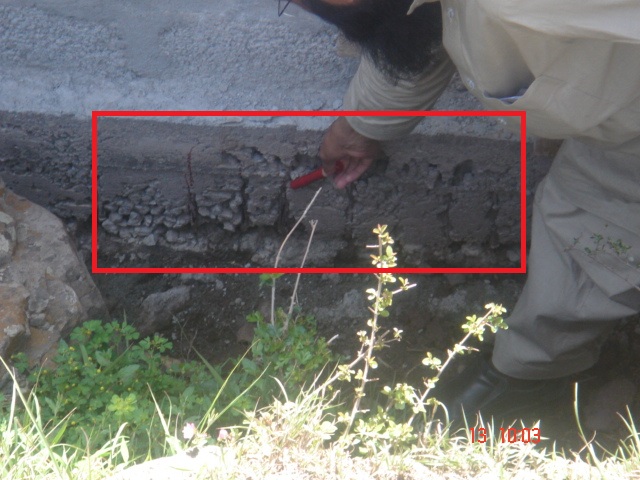
-
Air voids reduce the strength of the concrete. For every 1% of entrapped air, the strength falls by somewhere between 5 and 7%. This means that concrete containing a mere 5% air voids due to incomplete compaction can lose as much as one third of its strength.
-
Air voids increase concrete's permeability. That in turn reduces its durability. If the concrete is not dense and impermeable, it will not be watertight. It will be less able to withstand aggressive iquids and its exposed surfaces will weather badly.
-
Moisture and air are more likely to penetrate to the reinforcement causing it to rust.
-
Air voids impair contact between the mix and reinforcement (and, indeed, any other embedded metals). The required bond will not be achieved and the reinforced member will not be as strong as it should be.
-
Air voids produce blemishes on struck surfaces. For instance, blowholes and honeycombing might occur.
Summing up, fully compacted concrete is dense, strong and durable; badly compacted concrete will be porous, weak and prone to rapid deterioration. Sooner or later it will have to be repaired or replaced. It pays, therefore, to do the job properly in the first place.
Stiff mixes contain far more air than workable ones. That is one of the reasons why a low-slump concrete requires more compactive effort than one with a higher slump - the compaction needs to continue for a longer time, or more equipment has to be used.
Even air-entrained concrete needs to be compacted to get rid of entrapped air voids. The difference between air voids and entrained air bubbles should be noted at this stage. The air bubbles that are entrained are relatively small and spherical in shape, increase the workability of the mix, reduce bleeding, and increase frost resistance. Entrapped air on the other hand tends to be irregular in shape and is detrimental to the strength of the mix. It is to remove this air that the concrete must be properly compacted. There is little danger that compaction will remove the minute air bubbles that have been deliberately entrained, since they are so stable.
Methods of Compaction of concrete
Vibration:
To compact concrete you apply energy to it so that the mix becomes more fluid. Air trapped in it can then rise to the top and escape. As a result, the concrete becomes consolidated, and you are left with a good dense material that will, after proper curing, develop its full strength and durability.
Vibration is the next and quickest method of supplying the energy. Manual techniques such as rodding are only suitable for smaller projects. Various types of vibrator are available for use on site.
Poker Vibrators
The poker, or immersion, vibrator is the most popular of the appliances used for compacting concrete. This is because it works directly in the concrete and can be moved around easily.
Sizes:
Pokers with diameters ranging from 25 to 75mm are readily available, and these are suitable for most reinforced concrete work. Larger pokers are available - with diameters up to 150mm - but these are for mass concrete in heavy civil engineering.
Radius of action:
When a poker vibrator is operating, it will be effective over a circle centred on the poker. The distance from the poker to the edge of the circle is known as the radius of action.
However, the actual effectiveness of any poker depends on the workability of the concrete and the characteristics of the vibrator itself. As a general rule, the bigger the poker and the higher its amplitude, the greater will be the radius of action. It is better to judge from your own observations, as work proceeds on site, the effective radius of the poker you are operating on the concrete you are compacting.
The length of time it takes for a poker vibrator to compact concrete fully depends on:
-
The workability of the concrete: the less workable the mix, the longer it must be vibrated.
-
The energy put in by the vibrator: bigger vibrators do the job faster.
-
The depth of the concrete: thick sections take longer.



